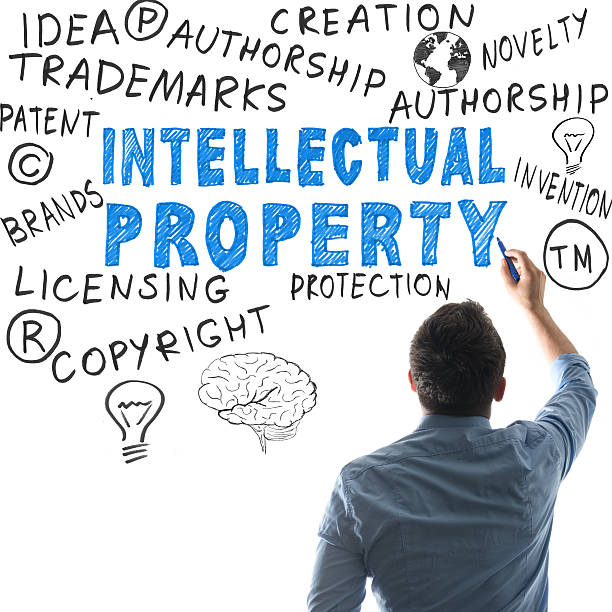In the global landscape of intellectual property, the valuation of international patents presents a unique set of challenges. This article delves into the intricacies of assessing the value of patents on an international scale, exploring the complexities that arise from diverse legal frameworks, cultural nuances, and economic variations.
Understanding the Global Intellectual Property Landscape
Navigating the valuation of international patents begins with a deep dive into the heterogeneity of legal frameworks across jurisdictions. Different countries have distinct patent laws, varying in terms of requirements, durations, and criteria for patentability. Understanding the intricacies of these legal landscapes is essential for accurate valuation, as deviations in patent protection and enforcement significantly impact the perceived value of intellectual property on a global scale.

Cultural Considerations in Valuation
Cultural nuances play a pivotal role in shaping the value attributed to patents in different regions. Attitudes towards intellectual property, innovation, and technology can vary widely. This section explores how cultural perceptions influence the valuation process, shedding light on the need for sensitivity to cultural differences when assessing the worth of international patents. A nuanced understanding of cultural factors is crucial for effective communication and negotiation in the international intellectual property arena.
Operational Challenges in International Patent Valuation
Translation and Language Barriers
The challenge of translation and language barriers in the valuation of international patents is not merely about converting words from one language to another; it involves preserving the intricate technical and legal nuances embedded in patent documents. Patents are intricate documents, laden with specific technical jargon and legal terminology that hold the key to the uniqueness and inventiveness of an innovation. Accurate translation is paramount for a comprehensive valuation, ensuring that the translated patent maintains its original intent, precision, and legal implications. This challenge is accentuated by the fact that patent claims and specifications can be highly technical, requiring a translator with expertise in both the technical field and the legal intricacies associated with intellectual property. The failure to overcome these language barriers may result in misinterpretations that can have far-reaching consequences, impacting the accuracy and reliability of the valuation process.
Moreover, the importance of linguistic precision extends beyond the literal translation of words. It involves capturing the contextual and cultural nuances that may not have a direct equivalent in another language. For instance, a specific legal term in one jurisdiction may not have an exact counterpart in another. This section emphasizes the need for translators with a deep understanding of both the technical subject matter and the legal frameworks of the relevant jurisdictions. Stakeholders involved in the valuation process must recognize the intricate dance between language and the essence of a patent, ensuring that the translated version accurately reflects the innovation’s technical details and legal significance. Only then can a truly comprehensive and precise valuation be achieved in the face of the unique challenges posed by translation and language barriers in the international patent landscape.
Differing Examination Processes
The valuation of international patents encounters a significant hurdle in the form of varying examination processes across jurisdictions. Each country has its own set of rules, standards, and criteria for examining patent applications, leading to a diverse landscape of examination procedures. Understanding these nuances is paramount for effective valuation, as differences in examination standards can directly influence the perceived strength and enforceability of a patent. Some jurisdictions may have stringent examination processes that thoroughly scrutinize the novelty and inventiveness of a patent, while others may adopt a more lenient approach. Exploring the intricacies of examination variations allows stakeholders to grasp the challenges and opportunities embedded in the diversity of international patent systems.
Navigating these differences involves recognizing that a patent’s perceived value may fluctuate based on the stringency of the examination it undergoes. A patent that successfully withstands rigorous examination in one jurisdiction may be subject to additional challenges in another with different standards. This section sheds light on the need for a nuanced understanding of the examination processes, emphasizing that valuation strategies must be adaptive and consider the strengths and weaknesses inherent in diverse international patent systems. Stakeholders must be equipped to tailor their approach based on the specific examination procedures a patent has undergone, recognizing the direct impact on its overall value. In essence, acknowledging and navigating the differing examination processes become integral components of a thorough and insightful valuation process for international patents.
Economic Factors and Global Market Dynamics
Economic Disparities and Valuation Implications
In the realm of international patent valuation, economic factors wield considerable influence, posing both challenges and opportunities. The disparities in economic development, income levels, and market conditions across countries present a multifaceted landscape that complicates the establishment of a standardized valuation approach. The economic strength of a country directly impacts its capacity for innovation and technological advancement, affecting the valuation of patents originating from different regions. This section delves into the nuanced implications of economic variations on patent valuation, emphasizing the necessity for strategies that navigate the diverse economic landscapes where international patents operate. When assessing the worth of a patent, understanding the economic context becomes paramount, as it influences factors such as market demand, production costs, and potential revenue streams. Crafting nuanced valuation strategies involves not only recognizing the economic disparities but also leveraging them as insights to tailor valuation methodologies according to the specific economic conditions of each jurisdiction.

Moreover, the implications of economic disparities extend beyond the immediate valuation process. They play a pivotal role in shaping licensing agreements, partnership negotiations, and the overall commercialization strategy for patented innovations. For instance, a patent originating from a economically advanced country may command a higher licensing fee due to the perceived market potential and economic stability. Conversely, a patent from a developing economy may require strategic considerations to account for potential challenges in market penetration and affordability. By delving into the intricacies of economic disparities, stakeholders in the international patent landscape can forge dynamic and adaptable valuation strategies that align with the economic realities of each jurisdiction, ultimately fostering a more accurate and context-sensitive assessment of patent value.
Global Market Trends and Industry Dynamics
The valuation of international patents is intricately intertwined with the dynamic tapestry of global market trends and industry dynamics. This exploration goes beyond the traditional valuation parameters, focusing on how trends in technology, healthcare, and other sectors shape the perceived and actual value of patents on a global scale. The constant evolution of technology, shifts in consumer preferences, and emerging industry trends significantly influence the valuation landscape. Understanding the dynamics of international markets is not only essential for accurate valuation but also pivotal for predicting the potential impact of market trends on the value of patents across diverse industries.
For instance, in the technology sector, the rapid advancement of artificial intelligence or the emergence of new communication technologies can swiftly alter the valuation of patents in these domains. Similarly, in healthcare, breakthroughs in medical treatments or diagnostic technologies can elevate the value of associated patents. This section emphasizes the need for stakeholders to stay attuned to these global market trends, as they directly influence the strategic positioning and perceived worth of international patents. Moreover, industry dynamics, including competitive landscapes and regulatory shifts, play a crucial role in determining the value of patents. By closely examining the trajectory of global market trends and industry dynamics, stakeholders can proactively adapt their valuation strategies, ensuring that they remain agile in the face of ever-changing market conditions.
Legal Challenges and Enforcement Issues
Cross-Border Enforcement Challenges
Enforcing intellectual property rights across borders presents a significant challenge in the valuation of international patents. This section delves into the legal complexities associated with cross-border enforcement, exploring the limitations and hurdles that arise when attempting to protect and enforce patents in multiple jurisdictions. A comprehensive understanding of these challenges is crucial for stakeholders engaged in international patent valuation.
Jurisdictional Conflicts and Legal Uncertainties
Jurisdictional conflicts and legal uncertainties pose inherent challenges to the valuation of international patents. This section explores the intricacies of navigating conflicting legal claims and uncertainties arising from differences in patent laws and enforcement mechanisms. Understanding the nuances of jurisdictional conflicts is essential for mitigating risks and making informed decisions in the valuation process.
Emerging Trends and Future Prospects
Harmonization Efforts in International Patent Law
In the complex terrain of international patent law, harmonization efforts emerge as a beacon of hope, offering a potential solution to the challenges outlined in this exploration. This section unveils the initiatives and agreements that aspire to align patent laws across jurisdictions, fostering a more standardized and predictable environment for international patent valuation. As nations recognize the importance of intellectual property on a global scale, efforts towards harmonization aim to streamline and synchronize patent laws, minimizing disparities and uncertainties that can impede the valuation process. By shedding light on these ongoing initiatives, stakeholders gain insights into the progress made and the challenges encountered in the pursuit of a more cohesive international patent framework.
One notable example of harmonization is the Patent Cooperation Treaty (PCT), which facilitates the filing of patent applications across multiple jurisdictions. Such initiatives aim to simplify the application process and enhance cooperation between patent offices, reducing the complexities associated with filing patents in different countries. This section underscores the significance of these harmonization efforts in providing a more harmonious and consistent landscape for international patent valuation. While challenges persist, the strides made towards alignment in patent laws pave the way for a future where valuing international patents becomes more accessible and standardized, benefiting innovators, investors, and the global intellectual property community.
Technological Advancements and Their Impact
The landscape of international patent valuation stands on the brink of transformation, driven by the relentless march of technological advancements. This exploration delves into emerging technologies, with a particular focus on the transformative potential of artificial intelligence and blockchain, and their implications for patent valuation methodologies. As these technologies redefine industries and reshape the nature of innovation, stakeholders in the patent landscape must grapple with the profound impact on how they assess the value of international patents.
Artificial intelligence, with its ability to analyze vast datasets, enhances the efficiency of patent searches and accelerates the evaluation of prior art. This technology introduces a new dimension to patent valuation, streamlining the process and providing more accurate assessments. Blockchain, with its secure and decentralized nature, holds promise in addressing issues related to patent ownership, reducing disputes, and ensuring the integrity of patent records. By exploring the implications of these technological advancements, stakeholders gain insights into the evolving tools and methodologies that will shape the future of international patent valuation.
Furthermore, the exploration extends beyond the current state of technology, offering a glimpse into the potential innovations that may emerge in the near future. Understanding how these advancements influence the patent landscape enables stakeholders to stay ahead of the curve, adapting their valuation strategies to harness the benefits and navigate the challenges posed by the rapid evolution of technology. In essence, technological advancements not only impact the valuation of international patents today but also serve as the architects of the valuation landscape of tomorrow.

Conclusion
In conclusion, the valuation of international patents is a complex endeavor that requires a multifaceted understanding of legal, cultural, operational, economic, and technological factors. By delving into the challenges associated with international patent valuation, stakeholders can gain insights into the intricacies of navigating a global intellectual property landscape. This comprehensive exploration not only highlights the difficulties inherent in assessing the value of patents on an international scale but also emphasizes the opportunities and advancements that may shape the future of global patent valuation practices.

Leave a Reply